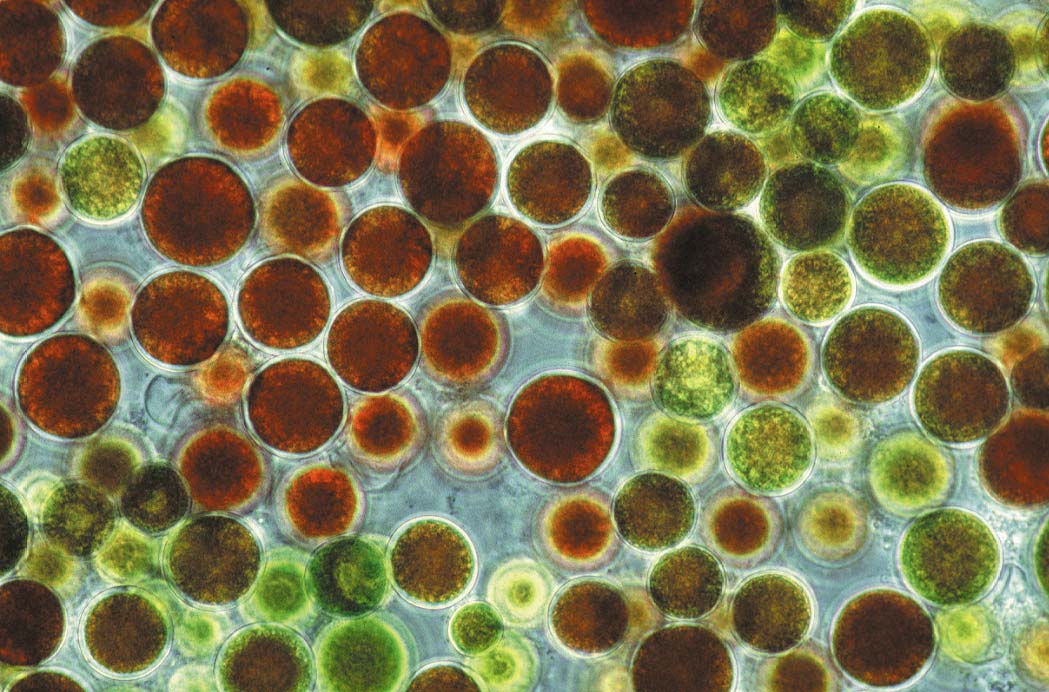
Astaxanthin
Astaxanthin is a powerful, naturally occurring carotenoid that is found in several marine micro-organisms and crustaceans. Shellfish and salmon consume microalgae as part of their diet and the red colored astaxanthin is responsible for the reddish-pink coloring of salmon, crab, lobster and shrimp. Although various microalgae naturally produce astaxanthin, the strain Haematococcus pluvialis is by far the preferred option for commercial production.
Astaxanthin is used in the pharmaceutical, nutraceutical, cosmetic, food, and aquaculture industries. Whilst scientific research into the exact extent of the benefits of astaxanthin are still ongoing, researchers have already identified a wide range of benefits to the human body. In addition to being the most powerful naturally occurring antioxidant, astaxanthin is also an anti-inflammatory and has singlet oxygen quenching and free radical scavenging properties.
Cultivation
Apart from its natural occurrence in marine micro-organisms, astaxanthin can also be commercially produced by cultivating microalgae or artificially derived through chemical synthesis. Marigan will specialize in the high-tech commercial cultivation of natural astaxanthin.
Concentration levels of naturally occurring astaxanthin vary considerably, with Haematococcus pluvialis accumulating the highest level of natural astaxanthin. Haematococcus pluvialis is common in small transient freshwater bodies and widely distributed in many habitats worldwide. When environmental conditions turn harsh, certain species of microalgae such as Haematococcus pluvialis produce astaxanthin as a natural defense mechanism, thus protecting the microalgae and ensuring its survivability.
Commercially, natural astaxanthin is cultivated either in open ponds or closed photobioreactors using a two-phase production method. The first phase is the growth or “green phase” and is followed by a stress phase or “red phase” which induces the microalgae to produce astaxanthin.
Synthetic astaxanthin is derived from petrochemical sources and has not been approved for human consumption in food or supplements. It can only be used as an additive in aquaculture feed. In some countries, synthetic astaxanthin has been prohibited for use in aquaculture feed and more and more countries are following suit.
Even though natural astaxanthin boasts significantly higher antioxidant activity than the synthetic version, commercial production currently yields lower quality astaxanthin. Marigan will use high tech FFE Technology during the green phase and multiple condition changes in the red phase to produce extraordinarily high levels of astaxanthin at pharmaceutical grade quality.
Use of Marigan Astaxanthin
Astaxanthin is used as a pigment source in aquaculture and poultry feeds, as a supplement in the global nutraceutical market and in the cosmetics and pharmaceutical industry. Marigan’s prime quality astaxanthin will be used in high-end applications by the nutraceutical, pharmaceutical and cosmetics industries.
- New Generation Medicines
- Enhanced Cosmetics
- Effective Health Supplements
